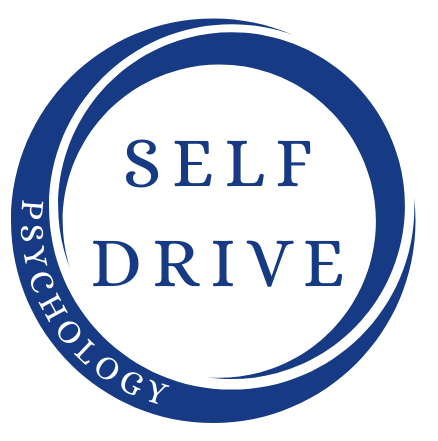This is a seminal work in the field of trauma therapy. Dr. Levine, a medical biophysicist and psychologist, introduces his groundbreaking Somatic Experiencing therapy in this book, highlighting the body’s innate ability to self-regulate and recover from trauma.
The Theory of Trauma
Dr. Levine postulates that trauma is not in the event itself, but in the nervous system’s inability to process it. He draws on naturalistic observations, noting how wild animals, despite routinely facing life-threatening situations, don’t seem to suffer from trauma. They shake off the residual energy of a survival response and move on, their nervous system reset.
Consider how this might apply to humans. Do we, in the face of a traumatic event, allow ourselves to fully process our survival responses? Or do we suppress these instinctual reactions, leaving the trauma trapped in our bodies?
Somatic Experiencing: A New Approach
Somatic Experiencing therapy, as proposed by Dr. Levine, is a gentle, body-focused method that aims to help people renegotiate and resolve the impact of trauma. It encourages the physical release of pent-up survival energy and helps the individual restore the natural balance and rhythm of their nervous system.
By focusing on bodily sensations and slowly reintroducing the body to these blocked survival responses, individuals can gradually let go of trauma, almost as if they were ‘waking the sleeping tiger’ and allowing it to pass through.
Practical Exercises
“Waking the Tiger” is filled with practical exercises that help the reader tune into their body and its sensations. For those under or considering therapy, these exercises can be a helpful supplement, encouraging mindfulness, body awareness, and active participation in the healing process.
The book introduces several exercises to help individuals become more attuned to their body and its reactions.
Here are three exercises inspired by the book:
1. Grounding Exercise
Grounding is a key concept in Somatic Experiencing, helping individuals to anchor themselves in the present moment. Here’s a simple exercise:
- Sit comfortably with your feet flat on the ground.
- Take a few deep breaths, in through your nose and out through your mouth.
- Notice the feeling of your feet touching the ground. Focus on the sensation, whether it’s the texture of your socks, the temperature, or the pressure against your soles.
- Gradually extend this awareness up through your legs, to your torso, arms, and finally your head. Notice how your body feels in contact with the chair and the ground.
- Try to maintain this awareness for a few minutes, returning to your breath if your mind wanders.
2. Sensation Tracking
This exercise helps you to become more aware of your body’s sensations, a crucial step in releasing trapped trauma:
- Find a quiet, comfortable space where you won’t be disturbed.
- Close your eyes and take a moment to just breathe, letting your breath naturally slow.
- Begin to notice any physical sensations in your body. This could be a tingling in your fingers, the feeling of your clothing against your skin, or a slight tension in your shoulders.
- Don’t try to change or judge these sensations, just observe them. If your attention drifts, gently bring it back to your body.
- Try to do this for a few minutes each day, gradually increasing the length of time as you become more comfortable with the practice.
3. Pendulation Exercise
Pendulation is a term used by Levine to describe the body’s natural rhythm between contraction (tension) and expansion (relaxation). This exercise helps to restore this rhythm:
- Start by identifying a sensation of discomfort in your body.
- Observe this sensation for a moment, then intentionally shift your focus to a neutral or pleasant sensation elsewhere in your body.
- Move your attention back and forth between the uncomfortable and comfortable sensations at your own pace. This ‘pendulation’ helps to release trapped energy and restores the body’s natural rhythm.
Remember, these exercises are a starting point and are not meant to replace professional therapeutic interventions for trauma. It’s recommended to practice them under the guidance of a trained professional, especially when dealing with trauma.
Proceeding with Care
For someone undergoing therapy, it’s essential to proceed with care. Dr. Levine emphasises the importance of working with a trained professional who can guide you safely through the process of trauma release. Somatic Experiencing can bring to the surface painful and overwhelming memories; having professional support ensures that this process is carefully managed and is ultimately healing.
Reflective Quiz
To further digest and integrate the learnings from this book, consider the following questions:
- How do I typically respond to stressful or traumatic events? Do I allow myself to fully process these experiences?
- How aware am I of my body and its sensations on a day-to-day basis?
- Am I holding any unresolved trauma in my body that I need to address?
- What coping strategies do I currently have in place for dealing with trauma? Are they helping me heal, or could they be causing more harm?
- Am I ready to begin the process of somatic experiencing, and do I have the right professional support in place to guide me through it?
- What small steps can I start taking today to become more in tune with my body and its reactions to stress and trauma?
- How can I safely and gently start releasing the pent-up survival energy in my body?
- How do I envision my healing journey? What does recovery look like to me?
Reflect on these questions and consider jotting down your responses. This introspective process can provide deeper insights into your journey with trauma and help guide your next steps. Remember, your path to healing is unique to you; honour that journey, and proceed at a pace that feels right.
Breaking My Addictions Summary
“Waking the Tiger: Healing Trauma” by Dr. Peter Levine presents a unique perspective on trauma and a novel approach to healing. Somatic Experiencing offers a promising path for those grappling with trauma, harnessing the body’s inherent ability to recover. If you’re under therapy or considering it, this book could be a valuable companion. Engage with the practical exercises, but always remember the importance of professional guidance when delving into traumatic experiences. This is a journey, and with the right support, you can navigate it towards a place of healing and peace.













